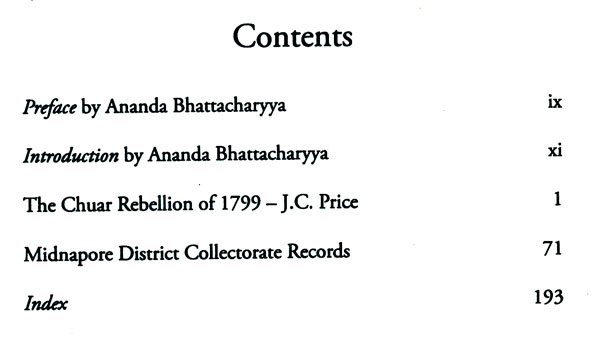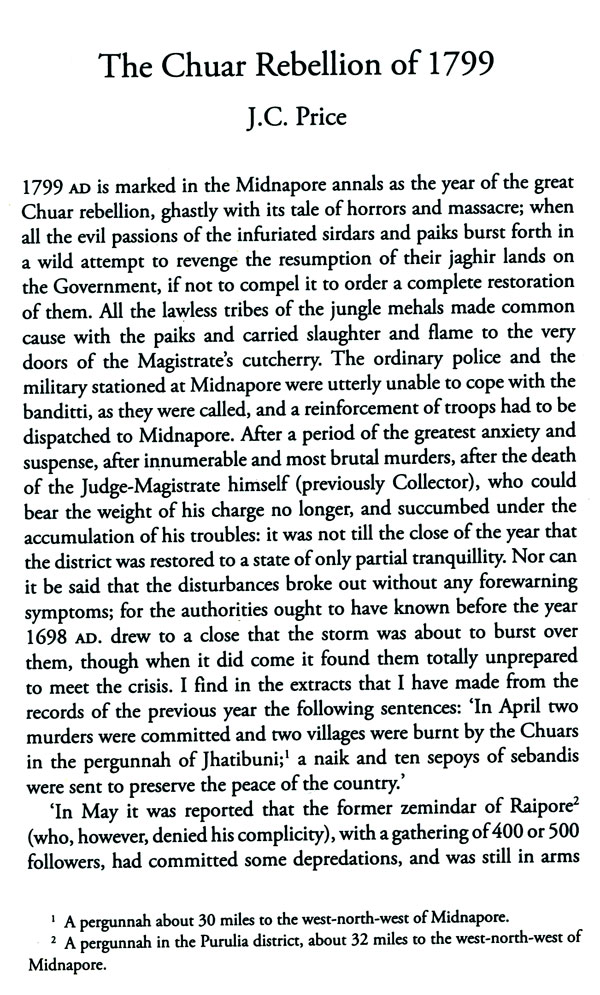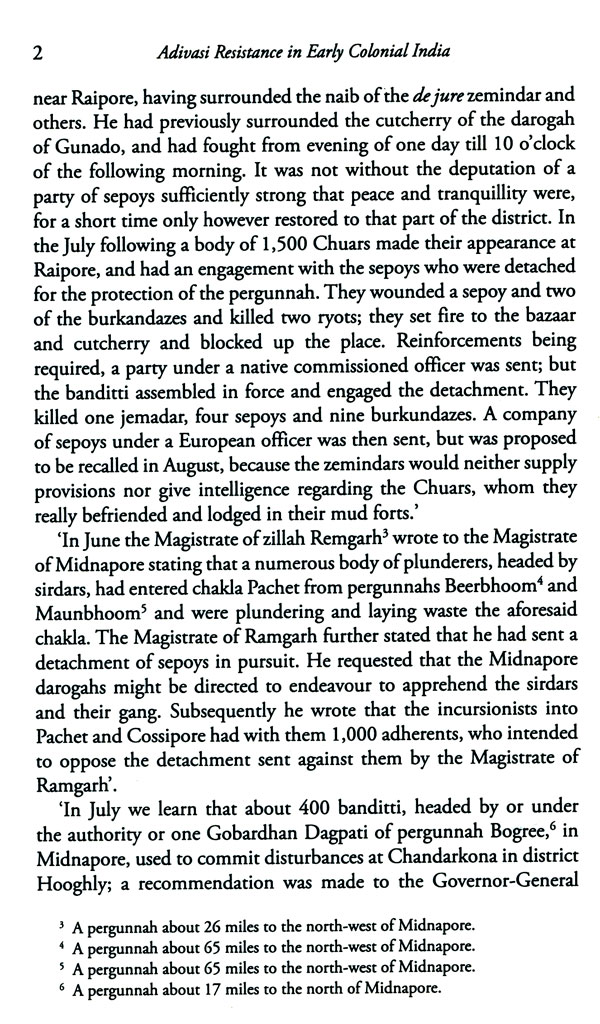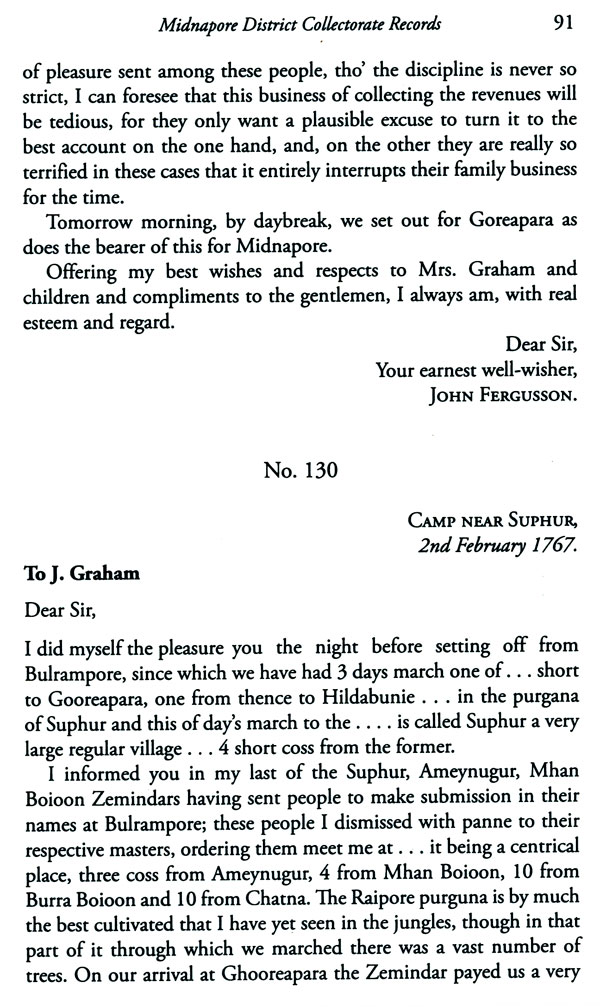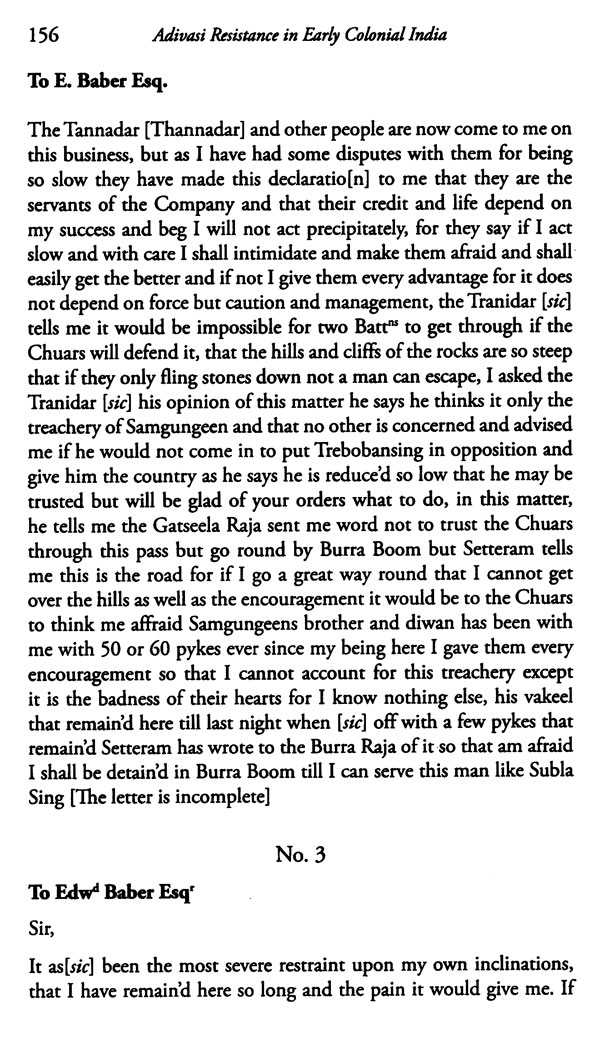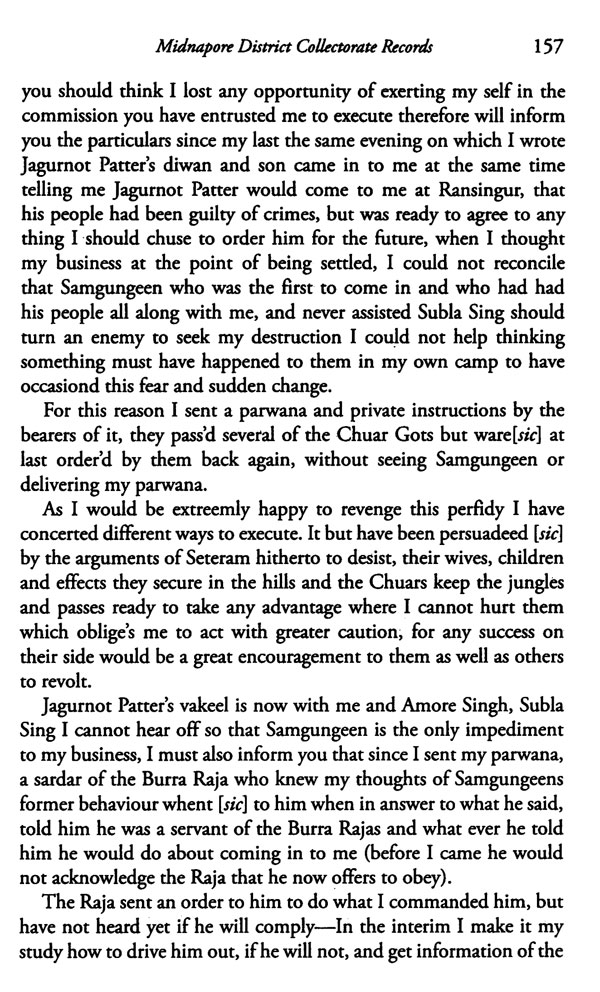
Adivasi Resistance in Early Colonial India (Comprising the Chuar Rebellion of 1799 By J.C. Price and Relevant Midnapore District Collectorate Records from the Eighteenth Century)
Book Specification
| Item Code: | NAZ720 |
| Author: | Ananda Bhattacharyya |
| Publisher: | Manohar Publishers and Distributors |
| Language: | English |
| Edition: | 2017 |
| ISBN: | 9789350981672 |
| Pages: | 246 |
| Cover: | HARDCOVER |
| Other Details | 9.00 X 5.80 inch |
| Weight | 480 gm |
Book Description
In the present compilation the text of Chuar Rebellion written by J.C. Price has been reproduced from the West Bengal District Census Handbook, Midnapore (1951) and the accompaning contemporary official documents have been collected from the Midnapore District Collectorate. The volume focuses on the beginning of the tribal-led peasant resistance in South-West Bengal. Though the year A.D. 1799 is marked in the annals of Midnapore as the year of the great Chuar Rebellion but their resistance began much earlier, right since the Company's accession in Bengal. The grievances of the adivasis coincided with the precarious condition of the zamindars leading to the spark of a popular revolt which is commonly known as Chuar rebellion. This volume illuminates with much vigour one of the earliest known instances of subaltern struggle in colonial South Asia.
The first formidable Adivasi (Tribal) resistance against the East India Company was the Chuar Rebellion. The Adivasis of the Jungle Mahal (mostly south-west Bengal including a part of Singbhoom, Manbhum, Chotanagpur and a portion of Orissa) were divided into various ethnic groups, viz. Bagdi, Kurmi, Santa', Bhumij, Bauri, Kora, Mahli and Munda and other communities could not tolerate the British policy of resumption of land which they enjoyed since the Mughal period. Besides the lands and their services to the local magnates they had no other means of subsistence. Their grievances coincided with the precarious condition of the zamindars leading to the spark of a popular revolt which is commonly known as Chuar rebellion. The peasants, pushed against the wall both by the East India Company Officials and local magnates, found no other alternative but to join in the clarion against the colonial regime.
The year 1799 is marked in the annals of Midnapore as the year of the great Chuar Rebellion when all the Adivasis, Sirdars and Paiks broke out in a rebellion. They wanted the restoration of their Jagir lands which the British had forcibly resumed earlier. The lawless tribes of the Jungle Mahal made common cause with the paiks and peasants and carried slaughter and fire to the very doors of the magistrate's cutcherry. The plundered booty on some occasions was distributed among the ryots. The threat to burn the town and plundering of revenue was no doubt an anti-colonial resistance against the East India Company.
In the present compilation the text of Chuar Rebellion written by J.C. Price has been reproduced from the West Bengal District Census Handbook, Midnapore compiled by Shri Asok Mitra (1951) and the contemporary official documents have been collected from the Midnapore District Collectorate, Midnapore. So far the compilation of the Midnapore District Collectorate Records are concerned, the original text in respect of spellings, punctuations, grammar, and sentences have been maintained. I am highly indebted to Professor Chittabrata Palit for offering new insights and views in revising and redrafting my introductory note. Professor Binay Bhushan Chaudhuri and Professor Irfan Habib made some valuable comments on the introductory note for which I am really indebted to them. I am also indebted to the officers and staff of the Midnapore District Collectorate for providing me valuable assistance in exploring the new sources on Chuar Rebellion. My acknowledgement is also due to the employees of West Bengal State Archives, Kolkata and the National Archives for their help in exploring the treasure troves.
**Contents and Sample Pages**